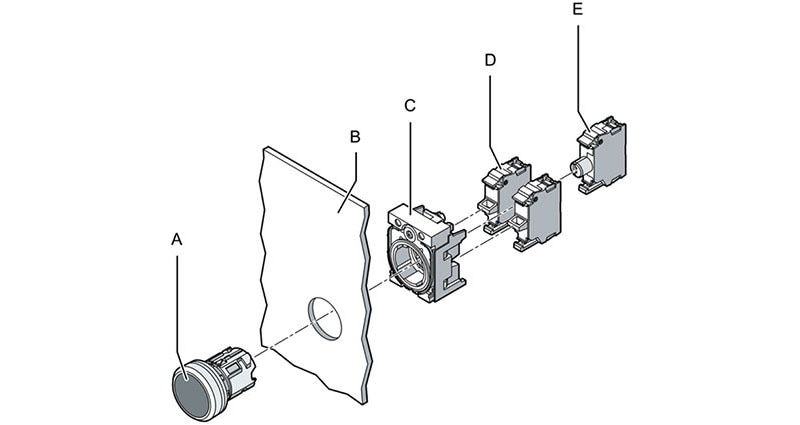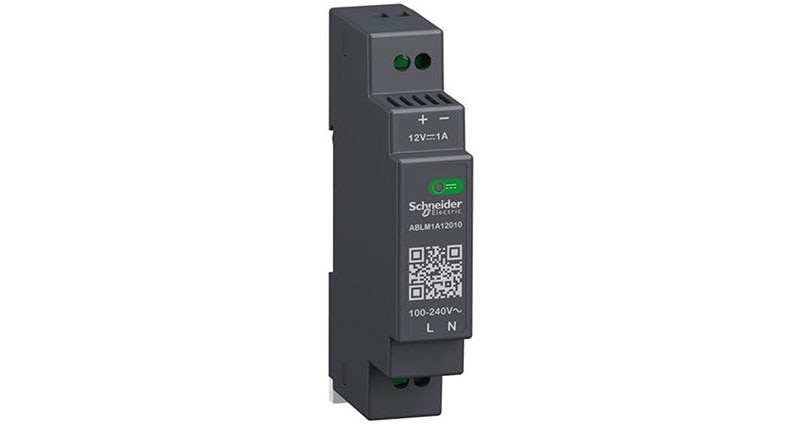Highly Integrated MCUs Simplify Precise and Efficient Motor Control Design
When my high-schooler joined the robotics club, I was one proud dad. However, it wasn’t long before he began to share familiar design problems. A big challenge for him was finding motor control hardware that was precise, efficient, and user-friendly.
In our professional world, these same demands crop up when designing everything from home appliances to industrial automation. That’s why I’m intrigued by Infineon’s new PSOC Control C3 microcontroller units (MCUs).
An efficient architecture for advanced motor control
The PSOC Control C3 family is offered as a high-performance yet efficient solution for advanced motor control. These MCUs are built around an Arm Cortex-M33 core with digital signal processing (DSP) and a floating-point unit (FPU) (Figure 1). This core is complemented by high-performance peripherals optimized for systems using power devices based on wide-bandgap technologies such as silicon carbide (SiC) and gallium nitride (GaN).
 Figure 1: The PSOC Control C3 MCUs feature powerful peripherals built around an Arm Cortex-M33 core with DSP and an FPU. (Image source: Infineon)
Figure 1: The PSOC Control C3 MCUs feature powerful peripherals built around an Arm Cortex-M33 core with DSP and an FPU. (Image source: Infineon)
Three Control C3 MCU peripherals are particularly noteworthy:
- The high-performance 12-bit successive approximation register (SAR) analog-to-digital converter (ADC) offers true synchronous idle sampling of up to 16 analog signals. This is crucial for accurately capturing fast-changing waveforms, such as motor phase currents in field-oriented control (FOC) systems or grid voltages in a solar inverter.
- The optional coordinate rotation digital computer (CORDIC) math accelerator offloads trigonometric and other transcendental functions from the Arm core. This benefits algorithms like the Park transforms in FOC systems and phase-locked loops (PLLs) in grid-tied power conversion.
- The timer/counter pulse width modulation (TCPWM) blocks can generate precise switching signals and integrate a motion interface (MOTIF), providing direct hardware support for Hall and quadrature encoders used in sensor-based motor control designs.
Together, these features provide a tightly integrated solution for demanding applications, such as high-efficiency motor drives, digital power supplies, and renewable energy systems.
Other features I’d highlight include abundant I/O and low-power modes that can take power consumption below 1 microampere (µA). PSA Certified Level 2 security protects against tampering, while IEC 60730 Class B and IEC 61508 SIL 2 compliance ensure functional safety.
Optimize cost vs. capabilities with two MCU lines
Not every design requires all available features, and budgets can be tight, so the PSOC Control C3 comes in two flavors: the cost-optimized Entry Line and a more capable Main Line. Key features of the Entry Line include a 100 megahertz (MHz) Arm core, a 6 megasamples per second (MSPS) ADC, and either a 48- or 64-pin package.
The Main Line steps up to a 180 MHz processor, a 12 MSPS SAR ADC, and adds an 80-pin package option. It also improves PWM timing to better than 100 picoseconds (ps), enabling control of switching frequencies above 200 kilohertz (kHz).
The PSC3M5FDS2AFQ1XQSA1 (Figure 2) exemplifies the Main Line's capabilities. This MCU combines the 180 MHz Arm Cortex-M33F core with 256 kilobytes (Kbytes) of flash memory in a PG-LQFP-80 package. It’s particularly well-suited to challenging applications, such as robotics and e-bike motor controllers, where performance is paramount.
 Figure 2: The PSC3M5FDS2AFQ1XQSA1 Main Line MCU combines the 180 MHz Arm Cortex-M33F core with 256 Kbytes of flash memory in a PG-LQFP-80 package. (Image source: Infineon)
Figure 2: The PSC3M5FDS2AFQ1XQSA1 Main Line MCU combines the 180 MHz Arm Cortex-M33F core with 256 Kbytes of flash memory in a PG-LQFP-80 package. (Image source: Infineon)
Accelerate motor control design with evaluation kits
For those interested in designing with the Control 3 family, the KITPSC3M5EVK evaluation kit (Figure 3) is a good starting point. It features a PSC3M5FDS2AFQ1 MCU, giving designers access to the full suite of PSOC Control C3 capabilities.
 Figure 3: The KITPSC3M5EVK evaluation kit provides a variety of headers for proof-of-concept work using PSOC Control 3 MCUs. (Image source: Infineon)
Figure 3: The KITPSC3M5EVK evaluation kit provides a variety of headers for proof-of-concept work using PSOC Control 3 MCUs. (Image source: Infineon)
The board features a straightforward design, making it suitable for breadboard experimentation. It also offers headers for MIKROE mikroBUS shields, Arduino Uno R3, and the Infineon Shield2Go interface for easy expansion. Overall, it’s a viable choice for peripheral testing, proof-of-concept work, and initial code development.
For those looking to jump directly into motor control design, more advanced kits, such as the KIT_PSC3M5_CC2 (Figure 4), are also available. Built around the same PSC3M5FDS2AFQ1 MCU, this comprehensive platform includes integrated gate drivers for power stage control, current sensing circuits for phase current measurement, and an on-board power supply for standalone operation. It’s an excellent choice for motor controller development, FOC algorithm testing, and system-level validation.
 Figure 4: The KIT_PSC3M5_CC2 is a flexible platform for prototyping motor control. (Image source: Infineon)
Figure 4: The KIT_PSC3M5_CC2 is a flexible platform for prototyping motor control. (Image source: Infineon)
Both boards and the PSOC Control C3 family are supported by ModusToolbox, the Infineon development ecosystem. The ModusToolbox Motor Suite provides ready-to-use code examples and tools specifically designed for motor control applications, enabling you to move quickly from evaluation to implementation. It also supports direct integration with numerous third-party IDEs and build systems, giving you flexibility to adapt the workflow to their preferred toolchain.
Conclusion
Whether you’re new to motion control, like my son, or an experienced designer looking for the latest technology, the PSOC Control C3 MCUs have a lot to offer. Advanced features, such as the CORDIC accelerator and synchronized ADC, give it impressive motor control capabilities. Best of all, these features are packed into a highly efficient MCU, opening up intriguing new possibilities for cost-sensitive designs.

Have questions or comments? Continue the conversation on TechForum, DigiKey's online community and technical resource.
Visit TechForum











